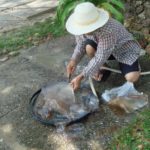It is at least a 2000-year-old tradition in many provinces in China to cure and preserve meat in wintertime. Pigs were slaughtered after the ‘Light Snowfall’ date (around Nov 22nd/23rd). Then, the temperatures plummeted, and this meat had to be preserved to be stored until next summer.

It is a tradition to cure meat for Chinese New Year festivities. The first day of Chinese New Year starts when the new moon appears between Jan 21st and Feb 20th. This marks the change from winter- to springtime and differs yearly. Curing meat begins about four weeks before the first day of Chinese New Year.

Every province has specific specialties but is often universally called ‘La rou’. ‘La’ has a variety of meanings, but in this connection, it refers to ritual meat sacrifices in the 12th month of the Chinese calendar, which had to be preserved for later. And ‘rou’ is a character meaning ‘meat’, not specifying from which type of animal.
‘La rou’ meat curing technique
The ‘La’ technique is to cure the meat for some days in a liquid of soy sauce, salt, sugar, yellow rice wine (Huang jiu), and ginger. After that, dry it briefly and hang it outside in fresh air for some hours daily to get sun- and air-dried. The winter air is quite dry in the Shanghai area. Therefore, the meat is partially dehydrated, and fat will be reduced by dripping off. And some people say the meat will taste stronger due to air drying.
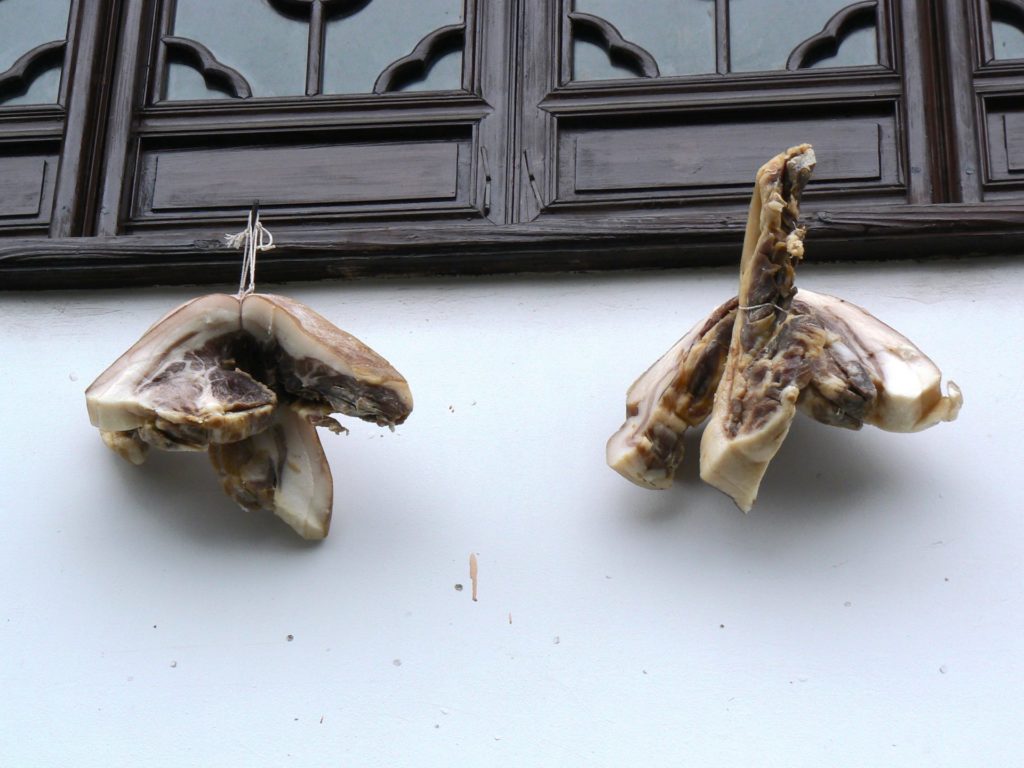
In rural areas, most fully sun—and air-dried meat is produced. This can take some months until it is thoroughly dried. In rural areas, the ready-prepared La rou is often smoked additionally. On the other hand, in Shanghai, La rou is only partially dried and mostly eaten at Chinese New Year festivities.
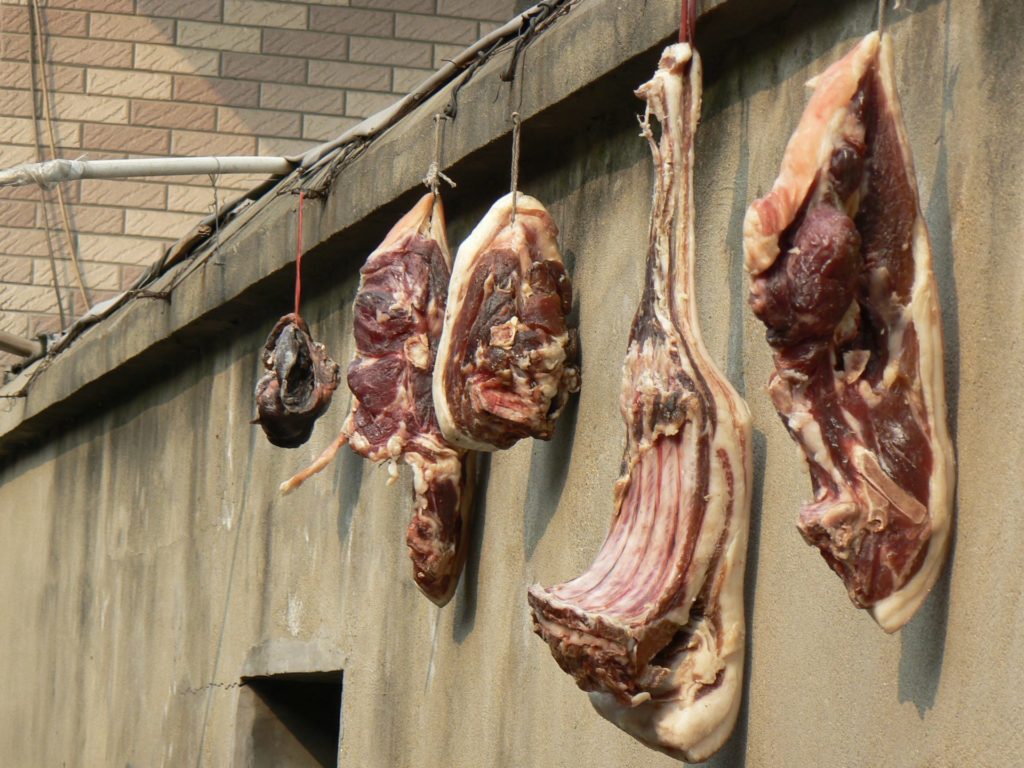
Total drying time depends strongly on exposure time to sunshine, the intensity of sun, the strength of wind, the size of a piece, the type of meat, etc., and it has to be felt with the finger if it still has enough elasticity and is cured outside. For a chicken, in average Shanghai weather conditions in January, three weeks of air and sun drying is a reasonable estimate of how long it will take to be ready for eating. Bigger pieces will need up to four weeks for drying.
Pork meat for ‘La rou’
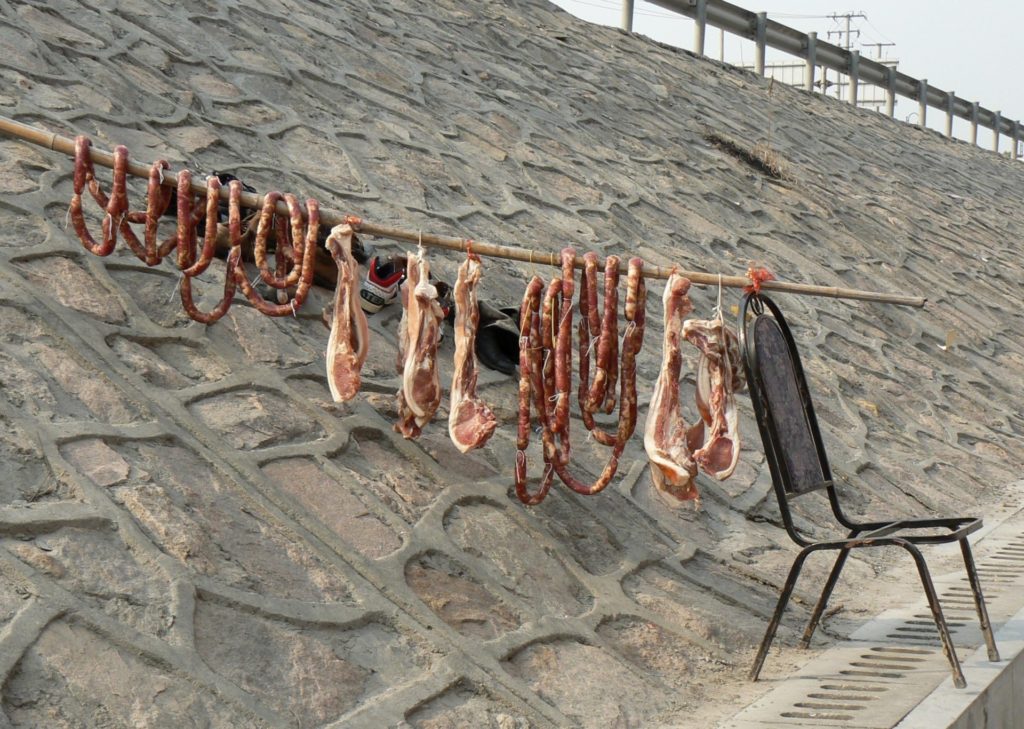
Pork is mainly used in La rou meat. The front and hind legs were and are used to produce ham. But pork belly strips, other secondary meat parts, innards, and the head are specially used for producing La rou. How this meat is prepared for eating depends on the province the person is coming from, as there are distinctive provincial varieties.
‘La chang’ Pork sausages
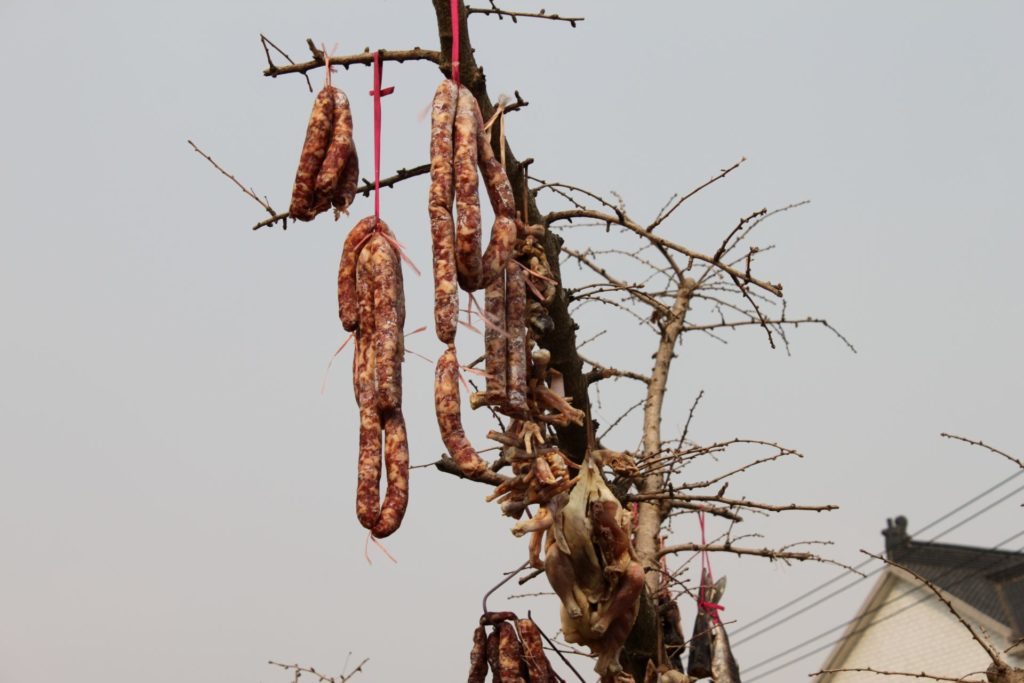
The famous La chang sausages are produced from fatty pork parts mixed with lean secondary meat parts and hung for drying outside. There are two styles: Cantonese-style La changs taste quite sweet, and Sichuan-style sausages are very spicy due to the addition of Sichuan peppers.
Air- and sun-dried ducks and chicken
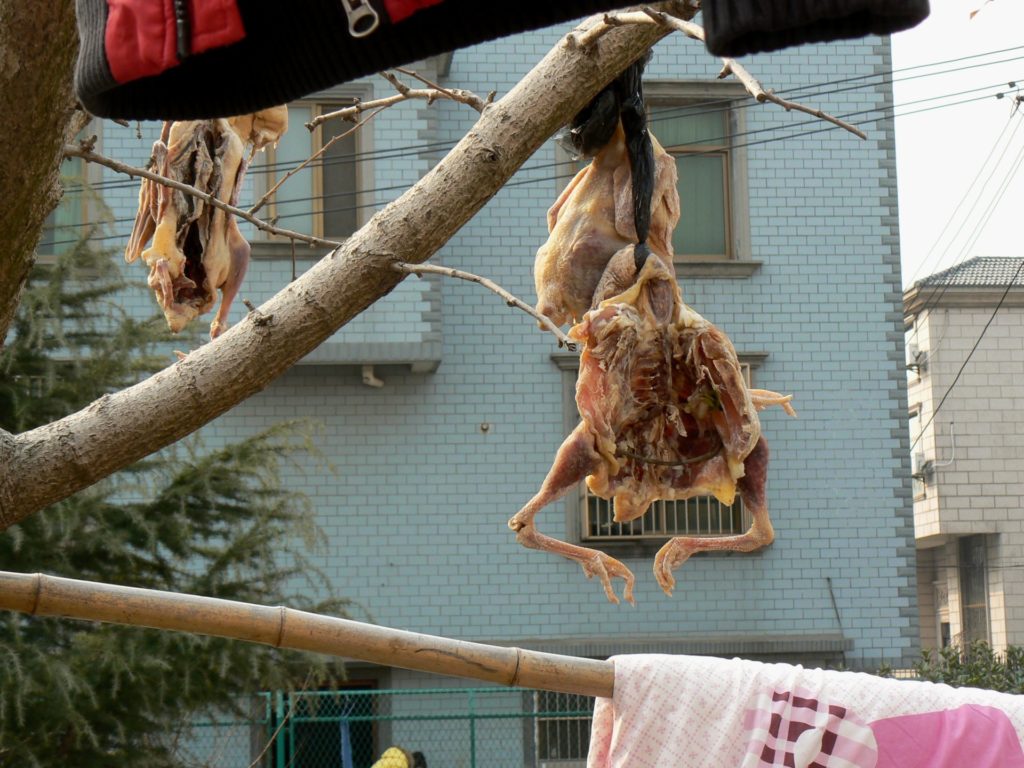
Besides pork, poultry is regarded as the next best option for La rou. Ducks and chicken are prepared like pork and are called ‘Ban ya’. This means ‘Flat duck’, due to their shape for easier drying.
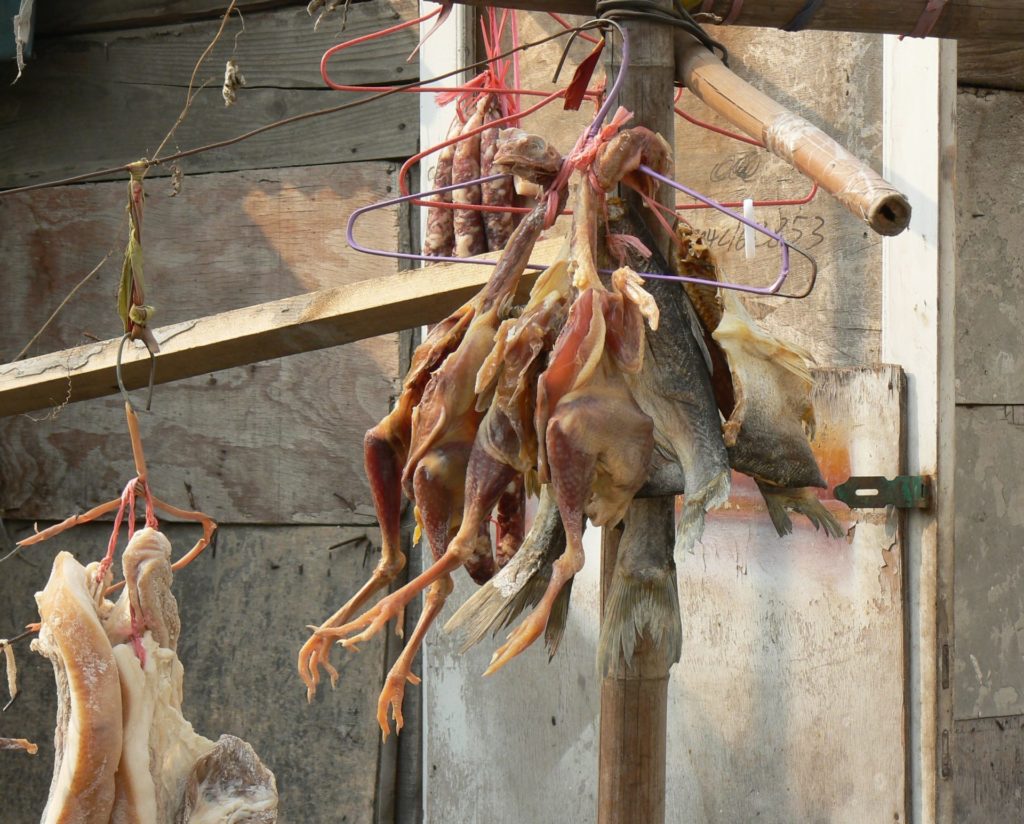
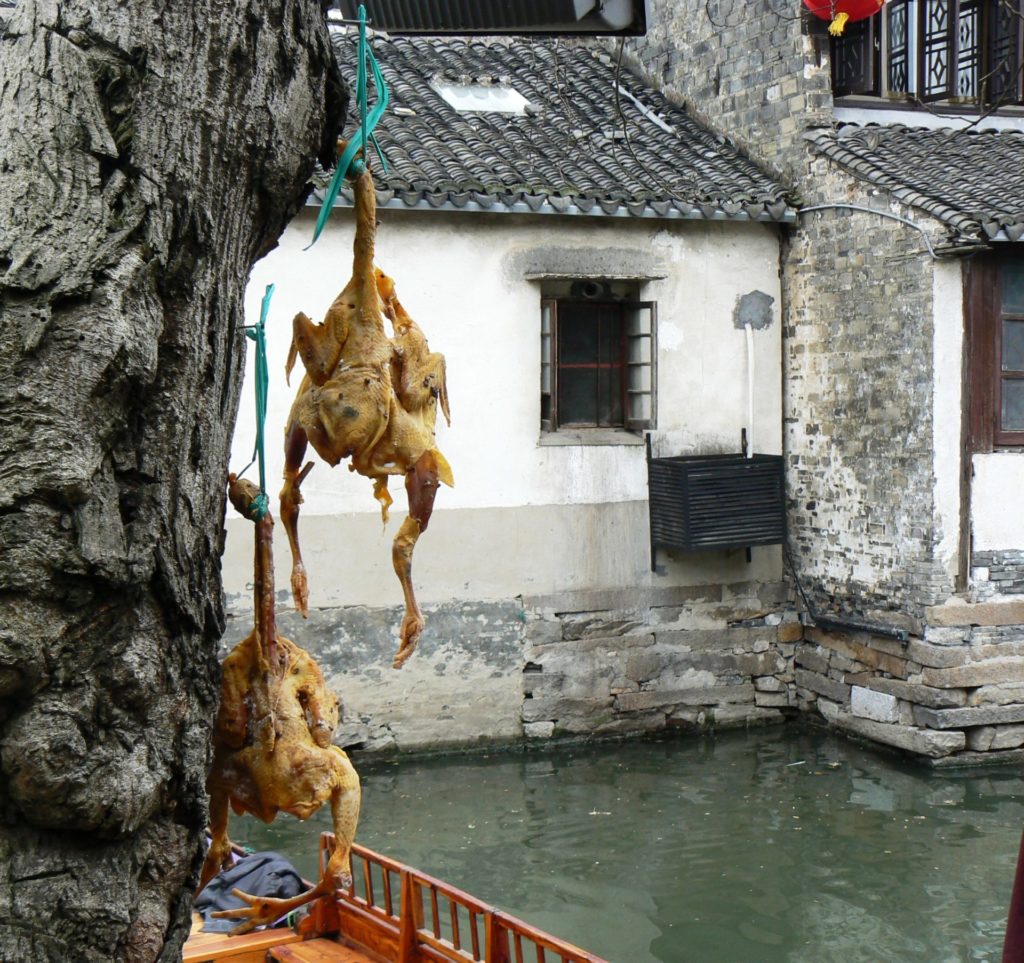
But still, many ducks and chickens are just hung up a tree as they are without flattening them. Often, poultry is steamed after sun- and air-drying.
‘La rou’ beef and lamb
Beef (La niu rou) and lamb (La yang rou) are not popular in the Shanghai area. In general, inhabitants of southern provinces of China—to which Shanghai belongs—prefer pork; in northern provinces, beef and lamb.
Air- and sun-dried fish
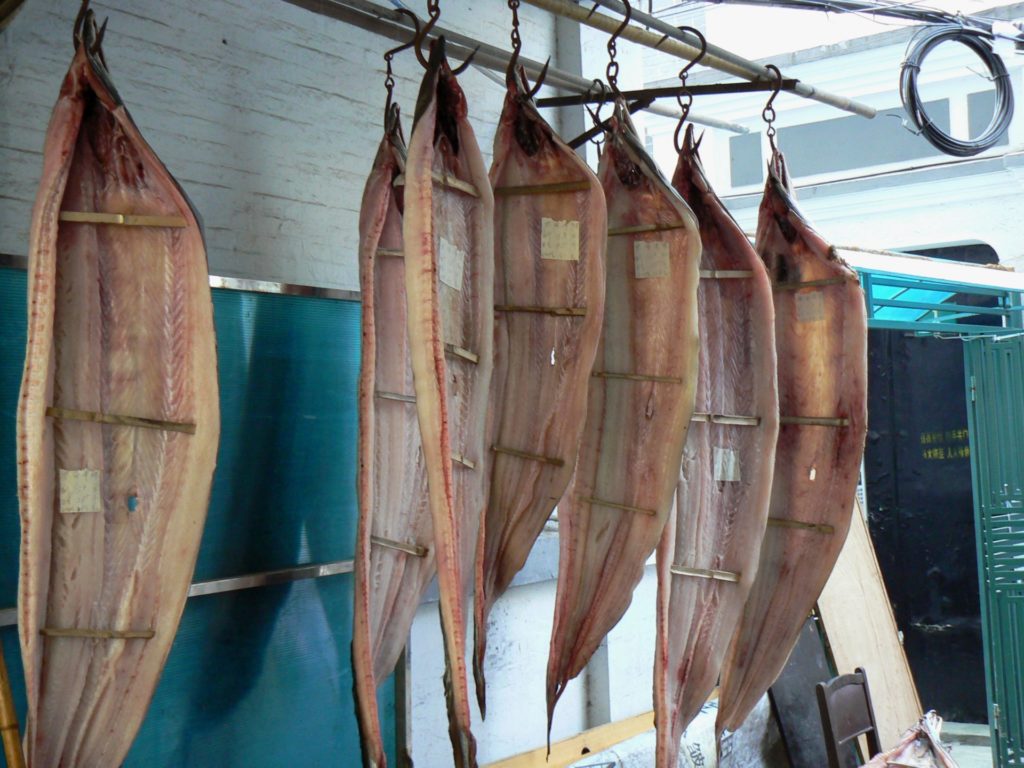

Conger eels (Muraenesox cinereus) are sold freshly in Shanghai. People buy fish that will be flattened and air-dried, with a piece of paper on it naming the owner or which part of the fish belongs to them.
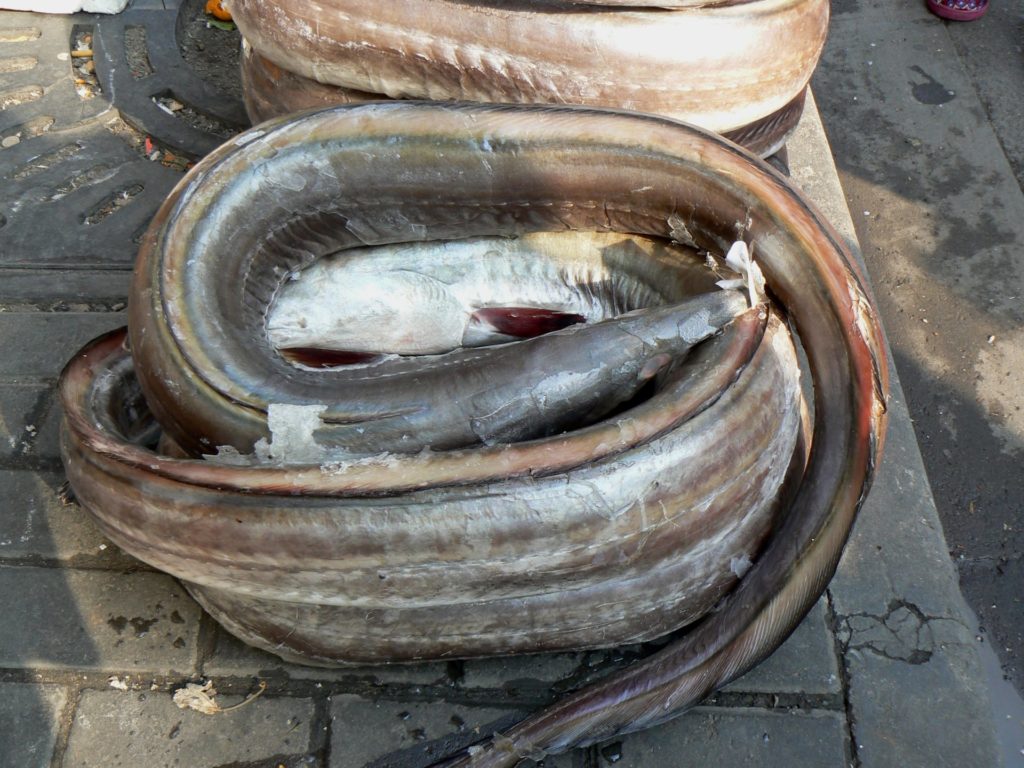
These massive fish are about 1.5 m long, and there are markets where they are curled around and prepared for processing. In addition to Conger eels, all other kinds of fish are being dried, especially the meaty parts behind the belly opening.
Lessons learned from drying meat in wintertime in Shanghai
- Sausages, whole chicken, undefined meat parts, and parts of fish – hanging on coat hangers, on trees, and outside of windows – are a strong food tradition in China.
- Also, massive conger eels will be flattened and air-dried in wintertime.
- The taste and textures of these various types of air-dried meat are quite special. They complement rice bowls together with vegetables and sauces very well, but they are also excellent starters before main dishes.
.


